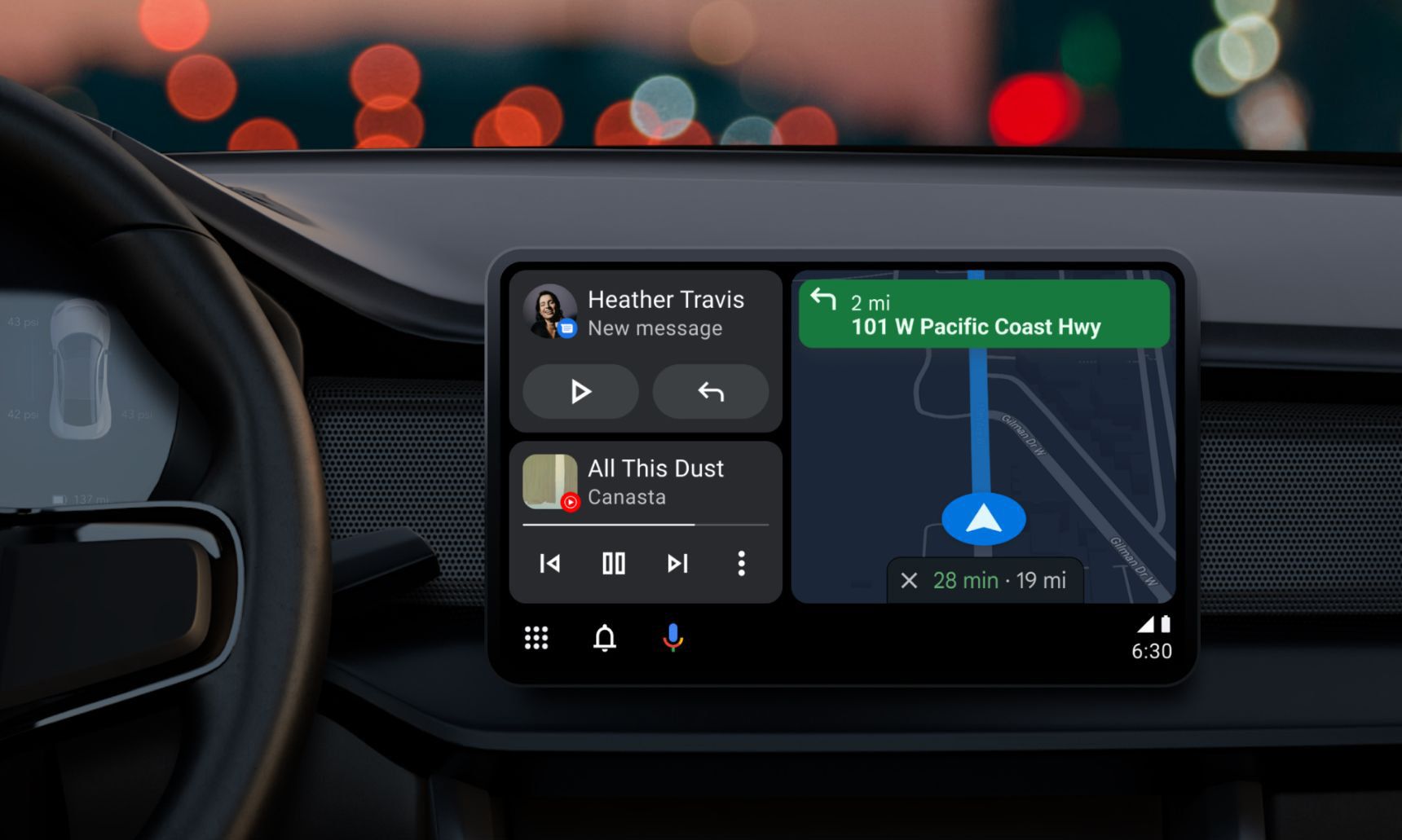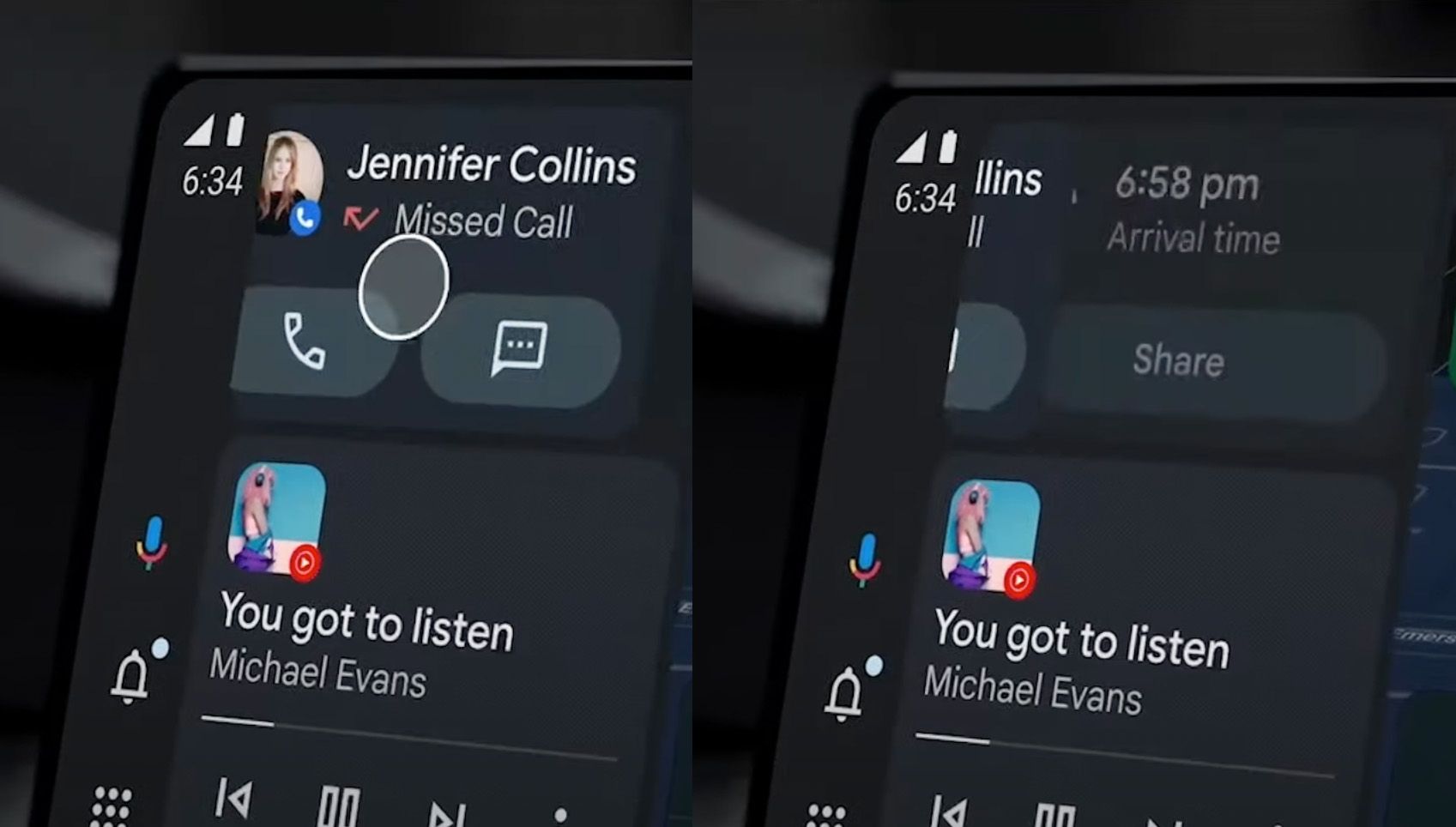While most of the big announcements from Google I/O 2022 came yesterday during the keynote or in sessions shortly after, day two still has a couple of exciting product-specific reveals. During a session dedicated to Android for cars, several substantial changes were announced that will make the in-car experience more convenient and enjoyable.
Perhaps the biggest upcoming change is the launch of the long-awaited split screen mode. First spotted late last year, this mode puts the navigation view, media player, and a contextual overlay all into the same screen. The new layout adapts to any screen size and aspect ratio, reorienting its design to make the best use of space.
Google previously released an update that adds the ability to send Smart Replies in response to messages, but this appears to be just part of the contextual actions users will be able to take with just a couple taps. For example, the split screen demo video also shows an action that allows users to share their expected arrival time with a contact.
The split screen mode is expected to roll out “just in time for the summer,” which likely means within the next six weeks or so.
Cars with Google built-in (previously known as Android Automotive) are also due to something new as they are about to be free to play videos while the car is parked. Originally announced earlier this year with YouTube as the focus, more streaming apps are now slated to join the list, including Tubi and Epix Now. This will give drivers more ways to stay entertained while charging their car or waiting to pick up food.
Google is also making plans to expand this capability to support Google Cast, so it’ll be even easier to find videos to play while you wait. There is also a web browser in the works, giving drivers another way to do roadside research.
Nothing specific was said about how long this will take to roll out, and it’s not clear if all of these features will come at the same time. However, if the original announcement holds true, video playback may be exclusive to Volvo for a short time before it rolls out to other brands.
Since this is a developer conference, there are also a few new things for the app makers. The biggest single detail is that apps can now be built to target a single library that works with both Android Auto and Android Automotive OS, saving a lot of time and energy involved with building and publishing separate variants.
New app templates and categories were also added to support more types of parking and navigation apps, and also to add “driver apps” to the navigation category, which enables companies like Lyft to provide custom tools suited to their drivers.
These and several other new features were added as part of Car App Library v1.3. New APIs also give media apps the capability to make recommendations for Google Assistant’s suggested listening feature, and new tools to enhance the navigation experience, like “alerters” to inform drivers of things like traffic cameras.
While we’ve seen some of these things in recent months, Google is showing off much more refined and polished versions that show the in-car strategy is on a good path.
Read Next
About The Author




